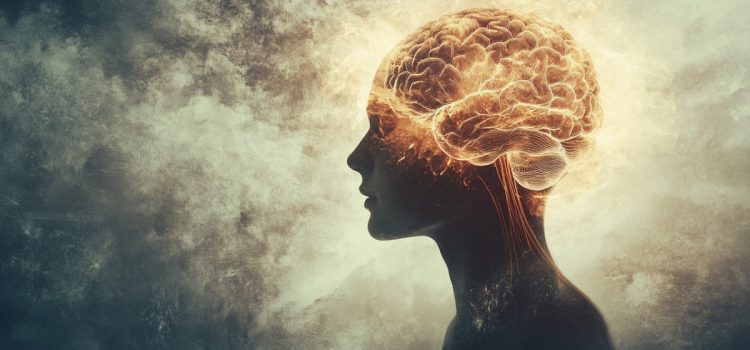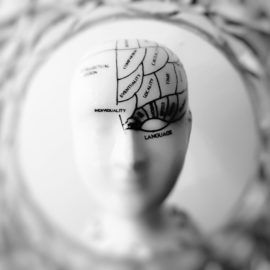
Your brain contains roughly 300 million tiny pattern recognizers, each one following the same simple set of rules. According to Ray Kurzweil’s How to Create a Mind: The Secret of Human Thought Revealed, these recognizers work together. Everything you experience as uniquely human emerges from one repeated process.
If Kurzweil is right, human-level artificial intelligence isn’t just possible—it’s inevitable. We can build machines that truly think by copying the brain’s hierarchical approach. Keep reading to learn what Kurzweil discovered and what it might mean for our future.
Overview of Ray Kurzweil’s How to Create a Mind
What if everything you think of as uniquely human—consciousness, creativity, love, and moral reasoning—emerges from a simple cognitive process repeated millions of times? In Ray Kurzweil’s How to Create a Mind (2012), Ray Kurzweil argues that our minds are pattern recognition machines, and our thinking emerges from 300 million “recognizers” in the brain that are organized in layers of increasing complexity. Each of these pattern recognizers follows the same set of rules (what computer scientists call an algorithm), but they’re arranged in hierarchies: Lower levels detect simple patterns like lines and curves, which feed into higher levels that recognize letters, then words, then abstract concepts like irony or beauty.
Kurzweil argues that this hierarchical system explains how our brains can perform feats that seem impossibly complex, from understanding language with all its ambiguities to making creative leaps that revolutionize science and art. He also argues this means that human-level artificial intelligence (AI) isn’t just possible—it’s inevitable. If our minds are sophisticated pattern recognition systems, then we can create artificial minds by building machines that implement the same layered approach our brains use. And if consciousness emerges from complex patterns of information rather than biological processes, then we’ll need new answers to fundamental questions about identity, free will, and what it means to be human.
Kurzweil is a computer scientist, futurist, and author of several books, including The Singularity Is Near. As the inventor of groundbreaking technologies including optical character recognition (OCR) software and speech synthesis systems, Kurzweil has spent decades applying pattern recognition principles to real-world problems and developing technologies that power modern AI systems like Siri. He has received numerous honors, including MIT’s Inventor of the Year Award and the National Medal of Technology.
This overview of the book How to Create a Mind: The Secret of Human Thought Revealed presents Kurzweil’s ideas in four sections:
- explaining how the brain’s architecture creates the mind through hierarchical pattern recognition
- exploring what makes this biological system so effective
- Kurzweil’s blueprint for building artificial versions of this system
- examining what this means for consciousness, identity, and humanity’s future
How Does the Brain Create the Mind?
To understand Kurzweil’s theory, we first need to understand the basic structure of the human brain. Kurzweil argues that the key to human intelligence lies in a thin outer layer of the brain called the neocortex. The neocortex is only about 2.5 millimeters thick (roughly the thickness of a table napkin), but it makes up 80% of the brain’s weight due to its elaborate folding, which creates its wrinkled surface. What makes the neocortex remarkable, Kurzweil argues, is its surprisingly uniform structure. Neuroscientist Vernon Mountcastle first observed this uniformity in the 1950s: He found that despite handling everything from visual perception to abstract reasoning to language, the neocortex maintains a consistent organization throughout.
The neocortex is arranged in vertical structures called cortical columns, each about half a millimeter wide and containing approximately 60,000 neurons or nerve cells. Inspired by his experience building pattern recognition systems for computers, Kurzweil proposes that within these columns are the brain’s fundamental pattern recognizers. Each pattern recognizer consists of about 100 neurons working together as a cluster, and we have roughly 300 million of these pattern recognizers spread across the neocortex. But what do these pattern recognizers do? And how does their activity in the brain create what we experience as the mind: our thoughts, memories, creativity, and consciousness? Kurzweil’s answer centers on hierarchy.
How the Mind Emerges From Pattern Recognition
Kurzweil argues that the mind emerges when millions of pattern recognizers work together in a hierarchical system, organizing themselves in layers of increasing complexity. Lower levels handle simple, concrete patterns, while higher levels combine these into increasingly complex concepts. For instance, when you recognize a familiar melody, lower levels detect notes and rhythms, middle levels identify chord progressions and phrases, and higher levels recognize the song and associated memories. Kurzweil explains that this same pattern recognition process, repeated at different levels of abstraction, gives rise to everything we think of as uniquely human—from understanding language to falling in love to having moral insights.
Within the brain’s hierarchical system of pattern recognition, information flows in two directions simultaneously. Bottom-up processing means that simple patterns detected at lower levels combine to trigger recognition of more complex patterns at higher levels—building upward from basic features to complete concepts. Top-down processing means that higher-level patterns send prediction signals downward, making lower levels more sensitive to expected patterns based on context and prior experience. Kurzweil argues that this bidirectional flow operates continuously across all levels of the hierarchy.
Consider what happens when you read the word “SUGAR.” Bottom-up processing begins when your eyes detect the features of the letters: horizontal and diagonal lines, curves, and corners. These trigger recognition at the next level up, where different combinations of lines and curves are recognized as the letters S, U, G, A, and R. Up another level, this sequence of letters triggers recognition of the word “SUGAR.” Top-down processing occurs at the same time, as higher levels send prediction signals down to lower levels. If you’re reading a recipe and see “S-U-G-A,” the word-level pattern recognizer for “SUGAR” tells letter-level recognizers, “Look out for an R next!” so that you can identify the letter even if it’s smudged or poorly printed.
Why This System Works So Well: Redundancy
Kurzweil contends that the hierarchical pattern recognition system achieves remarkable reliability because it stores multiple copies of important patterns—what he calls redundancy. Rather than storing just one copy of important patterns, your brain maintains thousands of pattern recognizers for things like the letter “S” or the concept “sugar.”
Kurzweil explains that the redundancy in the brain’s storage of important patterns serves two purposes. First, it enables robust recognition despite imperfect input. You can recognize a friend’s face in dim lighting, understand speech at a noisy party, or read sloppy handwriting because multiple pattern recognizers contribute to the same task. If some recognizers fail, others can compensate. Second, redundancy enables what Kurzweil calls invariant recognition, the ability to recognize patterns despite variations in size, position, style, or context. You identify the letter “S” whether it’s printed or handwritten, serif or sans-serif, because different pattern recognizers have learned to identify its “S-ness” across these variations.
Kurzweil argues redundancy also explains why memory works differently than you might expect. Your brain doesn’t store recordings of experiences, but saves patterns that allow you to reconstruct events as you recall them. This is why memories feel vivid and accurate while containing significant inaccuracies: Your brain rebuilds the memory from stored patterns instead of playing back a faithful recording of the original experience.
The Universal Nature of Hierarchical Processing
Kurzweil contends that all human cognitive abilities—memory, decision-making, creativity, and emotions—use this same hierarchical pattern recognition process, just with different learned patterns organized into different hierarchies. Memory requires the brain to store and retrieve sequences of patterns. Decision-making entails matching situational patterns to appropriate response patterns. Creativity emerges when pattern recognizers find connections between previously unrelated hierarchies of concepts—what we experience as metaphorical thinking. Emotions demand the activation of high-level pattern recognizers that integrate visual cues, memories, social contexts, and physical sensations into complex experiences.
The universality of hierarchical processing across the brain means that your approximately 300 million pattern recognizers, despite using the same basic algorithm, can handle the full range of human cognitive tasks simply by learning different patterns and organizing them into different hierarchies. Kurzweil argues that the power of this system lies not in the complexity of its individual components, but in the intelligence that emerges from their hierarchical organization.
What Makes the Brain So Effective at Pattern Recognition?
Now that we understand Kurzweil’s basic model—that the mind emerges from hierarchical pattern recognition in the neocortex—a question arises: What makes the human brain so good at this process? Kurzweil identifies four features that make the brain’s pattern recognition system so effective: plasticity, integration with motivational systems, specialized structures for complex emotions, and continuous learning. Using these four features, the brain creates the full spectrum of human cognitive abilities through simple, repeated pattern recognition structures.
Plasticity: The Brain’s Flexible Architecture
One of the most compelling pieces of evidence for Kurzweil’s theory comes from the brain’s plasticity—its ability to reorganize and adapt. According to Kurzweil, because all regions of the neocortex use the same pattern recognition algorithm, different areas can substitute for each other when necessary. This flexibility manifests in dramatic ways: People born blind can use their visual cortex for language processing. Stroke victims can sometimes recover lost functions by having other brain regions take over the work of damaged areas. Children who have an entire brain hemisphere removed can still develop normal intelligence, with the remaining hemisphere handling functions typically spread across both sides.
Kurzweil argues that the ability of one brain region to substitute for another would be impossible if different regions used fundamentally different processing methods. The fact that a brain area “designed” for vision can successfully handle language suggests that both vision and language rely on the same underlying pattern recognition principles.
Integration With Ancient Motivational Systems
Kurzweil explains that while the neocortex handles sophisticated pattern recognition, it doesn’t operate in isolation. Instead, it works with much older brain structures that generate our basic drives and emotions. These ancient brain regions—including the amygdala (which triggers fear responses), the nucleus accumbens (which creates pleasure sensations), and other parts of the limbic system—create the motivations that kept our ancestors alive: seeking food, avoiding predators, finding mates, and protecting territory. But, according to Kurzweil, the neocortex doesn’t replace the drives generated by older brain regions; it simply redirects them.
The old brain generates basic motivations through pleasure and fear responses, while the neocortex develops strategies to fulfill those drives. For instance, your drive to avoid danger might manifest as working diligently to impress your boss (keeping your job safe). The hunting instinct could be redirected into writing a book or competing in sports (channeling the drive to pursue and capture into achievement). The partnership between the neocortex and older parts of the brain explains why our behavior has both rational and emotional components.
Specialized Structures for Complex Human Emotions
Kurzweil also points to specialized brain structures that enable uniquely human capabilities. He highlights spindle neurons—specialized brain cells with extensive connections spanning the entire brain—as crucial for processing complex emotions like love, moral judgment, and aesthetic appreciation. Humans have approximately 80,000 of these cells, while great apes have far fewer, and other mammals lack them entirely.
These neurons become active during intense emotional experiences, such as looking at a romantic partner or hearing your child cry. Their extensive connectivity allows higher-level emotions to integrate information from diverse brain regions, though they don’t engage in rational problem-solving—which explains why you can’t consciously control experiences like falling in love or your emotional responses to music. Human infants develop spindle neurons between four months and three years of age, coinciding with the emerging capacity for moral reasoning and emotional understanding. According to Kurzweil, this timing suggests that our most sophisticated emotional and moral capabilities depend on pattern recognition.
Continuous Learning Throughout Life
Kurzweil explains that, unlike other brain regions that are largely pre-programmed via genetics, the neocortex starts nearly empty and learns continuously throughout life. The neocortex begins learning during fetal development and continues building hierarchical patterns through constant interaction with the environment. When a baby sees circular shapes—wheels, balls, plates, faces—pattern recognizers gradually learn to identify “circularity” as a recurring feature. As the child encounters more complex patterns, higher-level recognizers learn to combine basic features into sophisticated concepts like fairness, beauty, or humor.
Crucially, Kurzweil contends that learning and recognition happen simultaneously. As soon as a pattern recognizer learns to identify a particular pattern, it immediately begins contributing to the recognition of that pattern in new situations. This allows the neocortex to continuously refine and update its understanding of the world based on new experiences.
How Can We Build an Artificial Mind?
Kurzweil’s insight that intelligence emerges from simple, repeated structures leads him to conclude that creating artificial minds is just an engineering challenge. We don’t need to duplicate the brain’s biological complexity; we just need to implement its algorithmic principles. The neocortex has provided us with a blueprint, and each feature we’ve identified translates into specific engineering requirements: The uniform structure suggests we need many identical processing units. Plasticity means these units must adapt their connections based on experience. Integration with motivational systems implies that we need goal-oriented learning. Continuous learning requires systems that can update their knowledge without losing abilities.
Early Attempts: Neural Networks and Their Limitations
Kurzweil explains that the first serious attempts to build brain-like systems began with artificial neural networks in the 1950s. Early neural networks showed that simple processing units connected in networks could learn to recognize patterns. Frank Rosenblatt’s Mark I Perceptron, which Kurzweil encountered as a student, consisted of artificial neurons with adjustable connection weights that could be trained through feedback. While these networks could learn to distinguish between different categories of input, their limitations became apparent when researchers tried to scale them up to handle real-world complexity.
The most significant problem was invariant recognition—the ability to recognize the same pattern despite changes in size, position, rotation, or style. A neural network trained to recognize the letter “A” in one font and size would often fail to recognize the same letter in a different context. These early systems also required extensive training and still performed poorly on tasks that seemed effortless for humans. The field of neural networks stagnated for nearly two decades after Marvin Minsky and Seymour Papert demonstrated the mathematical limitations of the networks that existed at the time, a critique that effectively killed funding for neural network research until the 1980s.
Kurzweil’s Breakthrough: Hierarchical Hidden Markov Models
Kurzweil’s key contribution to artificial intelligence came through developing hierarchical hidden Markov models (HHMMs) for speech recognition in the 1980s. (The term “hidden” refers to the fact that the system must infer the hierarchical patterns in a speaker’s brain based solely on the speech sounds it hears, while the actual patterns remain “hidden” inside the speaker’s mind.) HHMMs solved the problems that stymied earlier AI systems by combining hierarchical organization with probabilistic pattern recognition and efficient data handling.
Kurzweil recognized that the brain doesn’t process all of the sensory information we take in, but instead extracts the essential features of that information. This insight led him to use vector quantization, a technique for simplifying complex data while preserving the key details. Think of vector quantization like creating a simplified map that captures the essential features of complex terrain: You lose some detail but retain what’s needed for navigation.
For speech recognition, this meant converting the acoustic complexity of speech into patterns that captured what’s needed for language understanding. Kurzweil organized these patterns hierarchically, with lower levels recognizing phonemes (the basic sound units of language), which combined into words, which combined into phrases and sentences. The system operated probabilistically: It calculated the likelihood that particular patterns were present and made decisions based on those probabilities, rather than requiring a perfect match, just as your brain recognizes speech even when words are partially obscured by background noise.
Essential Algorithm Requirements
Through his work developing HHMMs and analyzing the human brain, Kurzweil identified four requirements for a computer system to achieve human-level pattern recognition: hierarchical self-organization, expectation and prediction, redundancy and robustness, and continuous learning.
Hierarchical self-organization means the system automatically arranges pattern recognizers into levels without explicit programming. Simple patterns naturally combine to form more complex patterns, which combine to form even more abstract concepts. This organization emerges from the learning process rather than being imposed by programmers.
Expectation and prediction requires higher-level patterns to send signals down to lower levels, making them more sensitive to expected inputs. This top-down processing is as crucial as bottom-up recognition for achieving human-like performance—just as your brain primes you to expect certain words when reading a sentence.
Redundancy and robustness means important patterns are stored multiple times across different recognizers, enabling reliable recognition despite partial or distorted input. A robust system degrades gracefully rather than failing completely when some components don’t work perfectly. This redundancy also enables invariant recognition—recognizing patterns despite variations in how they’re presented.
Continuous learning enables the system to adapt and improve based on experience without losing previously acquired knowledge. New patterns must integrate seamlessly with existing hierarchies, and the system must automatically optimize how it allocates its pattern recognition resources based on the frequency and importance of different patterns.
Proof of Concept: Watson and Modern Systems
By the time Kurzweil wrote his book, several systems demonstrated that these principles can work at impressive scales. IBM’s Watson, which defeated human Jeopardy! champions in 2011, implemented many of Kurzweil’s key insights: Rather than relying on a single approach, Watson combined hundreds of specialized pattern recognition modules. Each module contributed confidence-weighted answers to questions, with the system learning to trust different modules for different types of problems. Crucially, Watson learned most of its knowledge by reading natural language documents rather than being programmed with facts, showing that hierarchical pattern recognition systems could acquire broad knowledge through experience.
Similarly, the speech recognition systems that Kurzweil’s companies developed have evolved into technologies such as Siri and Google Voice Search, showing that HHMMs can handle real-world language processing at consumer scale. These systems routinely perform tasks that would have seemed impossible just decades earlier: understanding natural speech from diverse speakers, in various accents, with background noise and grammatical imperfections. This raises the question: If we can build machines that think using the same principles as human minds, what does that mean for consciousness, identity, and the future of intelligence?
What Does This Mean for the Future of Intelligence?
Kurzweil’s theory leads to a conclusion that challenges basic assumptions about consciousness and intelligence: If consciousness emerges from patterns of information rather than biological processes, then digital minds are real minds—not just simulations. We often assume that computers can only mimic intelligence. But, in Kurzweil’s view, a sufficiently advanced pattern recognition system wouldn’t be pretending to think—it would really be thinking. He argues that the patterns of information processing that constitute consciousness don’t depend on being implemented in biological neurons versus electronic circuits.
Kurzweil acknowledges that accepting this conclusion requires what he calls a “leap of faith.” There’s no definitive test for consciousness that doesn’t rely on philosophical assumptions about what consciousness actually is. However, he argues that this leap is no different from the one we make when we assume other humans are conscious based on their behavior and self-reports—we can’t directly access anyone else’s subjective experience. His position is straightforward: Once machines become convincing in their emotional reactions and claims about their subjective experiences—once they can make us laugh, move us to tears, and respond appropriately to joy and suffering—we should accept them as conscious beings.
Reconsidering Human Identity
This framework forces us to reconsider how we understand human identity. If consciousness consists of information patterns, Kurzweil argues that what makes you “you” is the specific pattern of information stored in your brain’s pattern recognition networks: the memories you’ve accumulated, the skills you’ve learned, the personality traits you’ve developed, and the ways of processing information you’ve established. Kurzweil contends that your identity isn’t tied to the particular molecules in your brain, which are completely replaced every few weeks. Instead, your identity lies in the continuity of information patterns—like how a river remains the same river despite consisting of completely different water molecules from day to day.
This has radical implications. Kurzweil contends that, if your brain were scanned and copied while you remained alive, both versions would feel like the “real” you, but they would be separate conscious entities. But, if your brain were gradually replaced with digital components over time, the way the molecules in your body are continually replaced, you would maintain continuity of identity throughout the process. The key insight is that identity is preserved through continuity of pattern, not continuity of physical substance.
Rethinking Free Will
Kurzweil’s framework also reshapes how we think about free will. If our decisions emerge from complex pattern recognition processes influenced by inputs from older brain systems, are we truly making free choices? Research shows that brain activity associated with decisions begins several hundred milliseconds before people report being aware of their intention to act. According to Kurzweil, this suggests that unconscious processes initiate actions before conscious awareness, which many people consider a challenge to the idea of free will.
But Kurzweil argues that this doesn’t eliminate free will in any meaningful sense. Drawing on Stephen Wolfram’s work with complex systems, Kurzweil contends that, even if our decisions are determined by prior causes, they remain impossible to predict without running through every step of the actual process. The system is so complex that even we can’t predict our own decisions in advance, and no external observer could simulate our choices without duplicating our entire mental process. In practical terms, Kurzweil suggests, this means our decisions are functionally equivalent to free will even if they’re technically determined.
Merging Human Intelligence and Artificial Intelligence
Rather than envisioning a future where artificial intelligence replaces human intelligence, Kurzweil predicts a gradual merger of human and artificial capabilities. We already extend our mental abilities with technology: Smartphones serve as external memory systems, search engines augment our knowledge, and GPS systems enhance our spatial reasoning. Kurzweil envisions direct integration through technologies like brain-computer interfaces that could allow our brain’s pattern recognizers to access digital networks. He contends that the end result would be enhanced humans whose thinking incorporates both biological and digital systems.
In Kurzweil’s view, the future of intelligence lies not in choosing between human and machine capabilities but in combining them into more powerful hybrid forms. The merger of human and artificial intelligence could lead to new types of conscious experience that transcend the limitations of current biological and digital systems. This future raises important questions about rights, responsibilities, and the nature of personhood. But in Kurzweil’s framework, these challenges emerge not from the threat of artificial intelligence but from the promise of expanded human consciousness itself—a future where the boundaries between biological and artificial intelligence aren’t just blurred; they’re meaningless.






